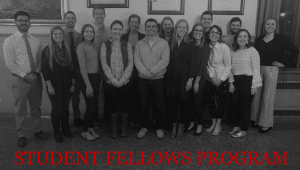
First, the good news: “Millennials Are Causing the U.S. Divorce Rate to Plummet.” As reported by Ben Steverman on Bloomberg.com, Census Bureau data show that millennials’ divorce rate is so much lower than baby boomers’ divorce rate that the overall divorce rate has plunged by 18% from 2008 to 2016. The evidence indicates that young couples are less likely to rush into marriage and subsequently realize they had made a mistake.
Unfortunately, as encouraging as a falling divorce rate sounds on the surface, there is some bad news associated with it, too. As the Steverman report states, “Many poor and less educated Americans are opting not to get married at all. They’re living together [and] often raising kids together [but] studies have shown these cohabiting relationships are less stable than they used to be.”
Although marriage is one of the most private institutions in a society, the state of marriage in a society has profound economic consequences. Repeated tabulations of data by social scientists shows a high correlation between being married and being prosperous. Economist Robert Whaples argues that after people get married, on average they are perceptibly more productive and earn more regardless of whether they were born prosperous or poor.
Further, Whaples shared key statistics about poverty among the married and unmarried. In 2005 (the most recent year for which he had data at the time he filmed his lecture series), the poverty rate was 7.8% for intact white American families and 8.2% for intact black American families. Combined with contemporary U.S. Census Bureau data that the poverty rate for unmarried mothers with children was 40% while it was only 8% for married couples with children, we can form two conclusions: 1) The much higher incidence of poverty or near-poverty among black Americans is not a racial gap, but a marriage gap, attributable to the much higher rate of white American families remaining intact compared to black American families. 2) In the words of policy analyst Robert Rector of the Heritage Foundation, marriage is “America’s greatest weapon against child poverty.”
Another salient point in Steverman’s report about America’s falling divorce rate was that the difference in marriage rates among the economically well-to-do and the economically marginal members of our society is “a sign of America’s widening chasm of inequality.” Yes, it is, but this trend is nothing new; on the contrary, it has been going on for decades.
The widening chasm of economic inequality to which Steverman referred is one of the central points in Charles Murray’s 2012 book Coming Apart. In it, Murray cited abundant data showing that the economic gap between affluent and economically marginal Americans has paralleled the widening gap between married and unmarried adults. Although it would be an oversimplification to assert that marital status is the single determinant of whether an American leads a prosperous life or not, it is clear that the perennial divide between the economic haves and have-nots is a divide between the married and unmarried.
The seemingly intractable persistence of a two-tier society must be frustrating the heck out of the social justice warriors and the inequality fanatics. The whole social engineering cult is besotted with the belief that it can construct a “great society”—i.e., one in which everyone shares more fully in the fruits of affluence—from the top down. The increasing incidence of unmarried Americans thwarts that egalitarian goal.
What, then, are the social planners to do? Would a federal Department of Marriage produce a larger number of happier marriages? Or should Uncle Sam ban marriage for everyone on the ground that it produces unequal economic outcomes? Even the most fervent of social planners can see what a nonstarter that is. Should married taxpayers pay a penalty to subsidize their poorer, unmarried compatriots? Would the favorite progressive prescription, “Raise taxes on rich corporations,” somehow result in more Americans marrying or help already married couples stay together? Hardly.
The marriage/wealth gap should enable everyone to see the limits of social engineering. There are certain things that the state simply cannot do. No government policy, program, or agency can mold citizens into individuals with loving hearts and the strength of character to accept responsibility and make long-term commitments.
Conservatives don’t have an easy answer for this problem either, although they reject out of hand the notion that it is up to government to “fix” the marriage problem.
That leads me to a humble suggestion for how more Americans can build a foundation for lasting marriages and the economic prosperity that generally follows. A successful marriage flourishes among individuals who are selfless enough to love others and to honor their duties. Marriage works best if the marriage partners have glimpsed the spiritual truths that it is sometimes better to give than to receive and to be of service to others instead of always prioritizing self-indulgence. Marriage is strengthened when husband and wife share the noble aspiration to live for a higher cause than just momentary whims and desires. Where are such values to be taught and inculcated? In church—maybe not in every church, but for 2,000 years, church has done much to prepare people for the demanding and fulfilling joys of marriage. Turning to the divine for guidance has blessed the lives of billions of people, including many generations of Americans. It can do the same today, if people will give it a try.


